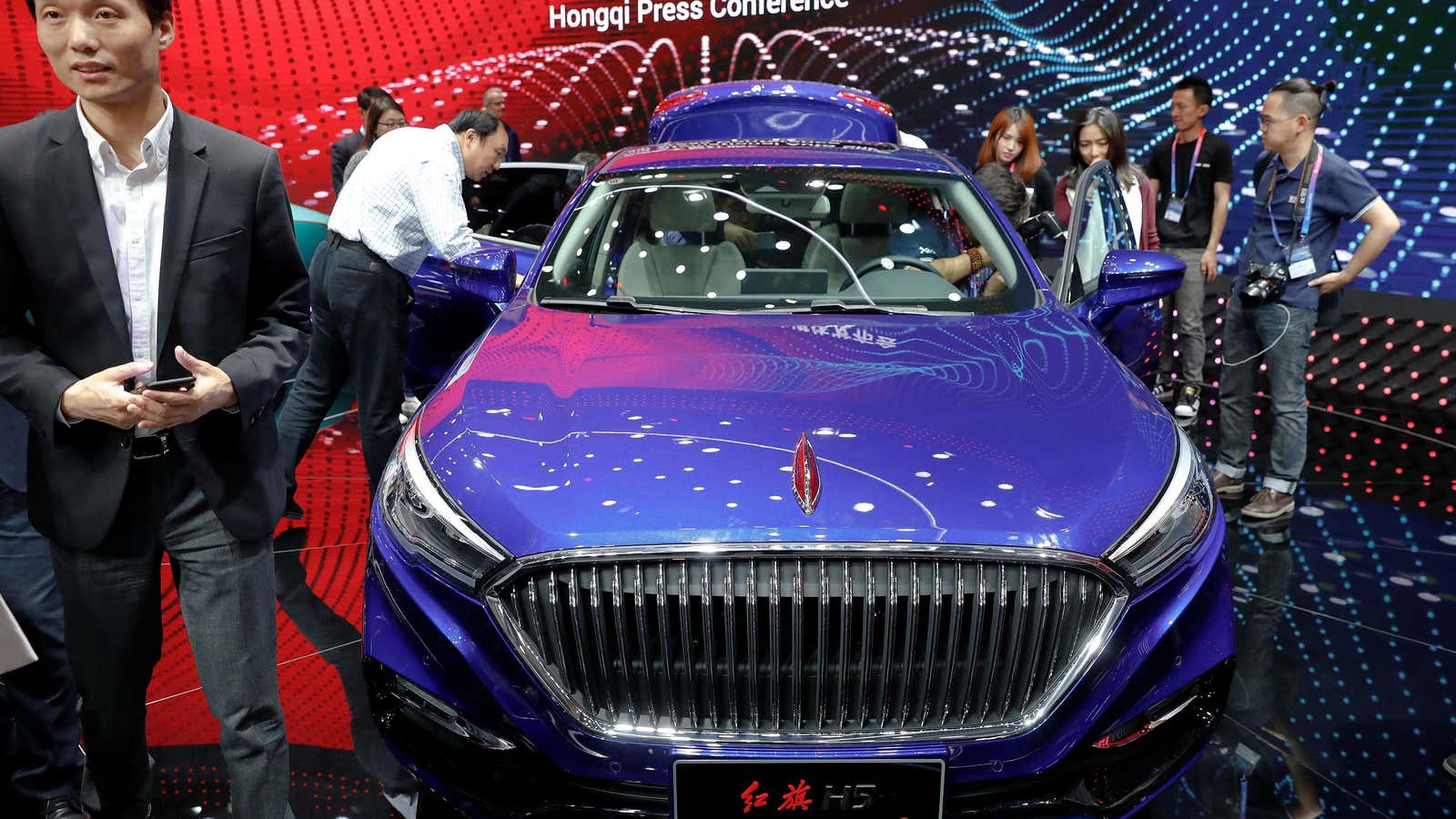Six decades ago, China’s first car maker, the state-owned First Automobile Work, released its first passenger car, Hongqi, or “red flag” at a time that the country was just starting to build its vehicle industry. For years, Hongqi has been a luxury car brand favored by China’s political elites, including former chairman Mao Zedong, yet not so much to the public.
But Hongqi has been increasingly looking at the hottest trend in the mass market. The brand is making a debut (link in Chinese) at the annual four-day-long Consumer Electronics Show in Las Vegas, kicking off tomorrow (Jan.8). It’s planning to introduce a new cockpit as part of a bigger package called “Qisheng,” a homophone of “raising a flag.” Under the plan, Hongqi said it will look at autonomous driving and electric vehicles—the two key areas in the roadmap of China’s auto industry. Hongqi couldn’t be immediately reached for more details.
Hongqi is not only looking at pure-battery vehicles, which dominate China’s “new energy vehicles (NEVs)” market with plug-in hybrids. It’s also making a bet on fuel-cell, a yet-to-commercialize group in China. Fuel-cell vehicles (FCVs), using hydrogen as the power source, have advantages such as shorter refueling time and longer driving range because the chemical process is more efficient when compared with other NEVs. But problems like the lack of refueling infrastructure have been obstacles for commercialization. Elon Musk, CEO of Tesla, has mocked FCVs as “fool cells.”
Still, some think it’s time for China to develop FCVs because of those advantages which can address range anxiety for logistics and public transport sectors, Wan Gang, father of China’s EV industry and former science and technology minister wrote in December on state media People’s Daily (link in Chinese).
The article comes as Hongqi plans to mass-produce the FCVs this year, a crucial time for China’s electric vehicle (EV) industry as it begins replacing government-led monetary subsidies with a cap-and-trade system for the EV market. Carmakers in China will need to meet EV production quotas to gain enough credits, which increase every year. Those who don’t hit the target will need to purchase credits from manufacturers who have produced more than needed.
Hongqi said it successfully tested fuel-cell engines in October last year, and is planning to use the engine on H5, a four-seat passenger car currently available in gasoline-powered (link in Chinese) versions.
At home, some carmakers are also looking at FCVs. Shanghai Automobile Industry Corporation, a state-owned manufacturer, has delivered 100 fuel-cell vans at the start of 2018. The group in 2017 rolled out an FCV version of its best NEV seller, Roewe, although it’s unclear when it will start selling that version. BYD, the Shenzhen-based firm and the world’s biggest NEV maker, announced a plan in May last year to build a fuel-cell bus in its Lancaster, California-based plant in the US. The bus will operate in Hawaii’s Honolulu’s Daniel K. Inouye International Airport.
Abroad, Japan’s Toyota has been selling the fuel-cell vehicles, for instance, Mirai since 2014. It can run on 500 kilometers (310 miles) on a single tank of hydrogen. But it hasn’t been able to take off.
Looking for more in-depth coverage of the show? Sign up for our special-edition CES Daily Brief
